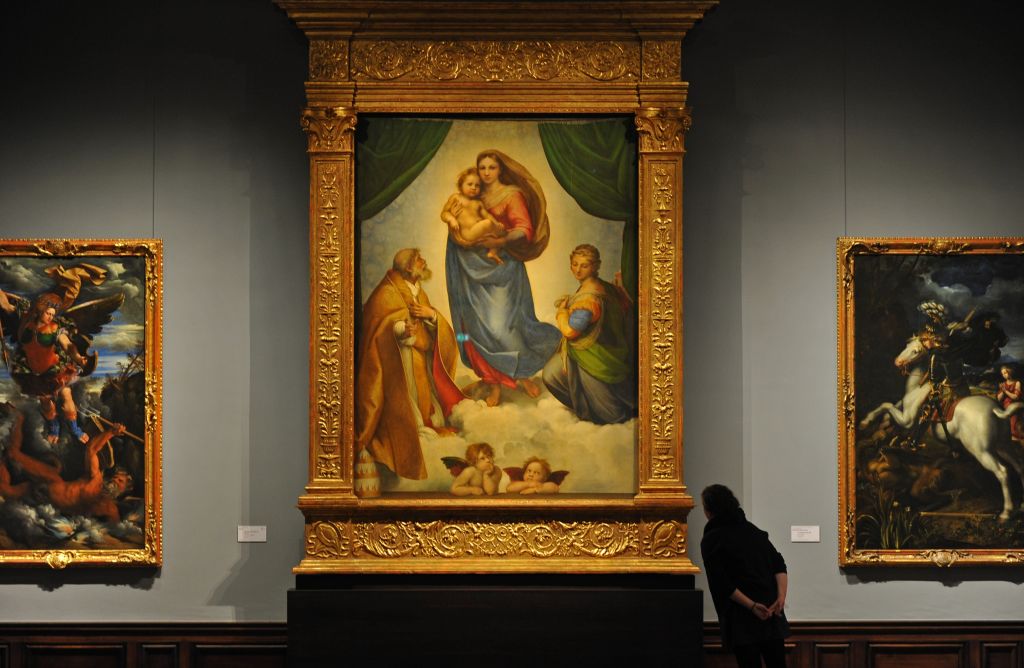The Internet was the Beginning of a New Folk Artist. Artificial Intelligence May be its End.
Everyone wants to be a creator. According to a report by YouTube, SmithGeiger, and the Fandom Institute, 65 percent of teenagers and young adults aged 14 to 24 now identify as creators. But the creator’s future is uncertain: the rise of AI-generated content is challenging their place in our limited and highly competitive attention landscape. What good is a content creator if we can generate unique content customized to each individual at will and at scale? Can the creator survive the advent of generative AI and the fourth Industrial Revolution?
I believe we can draw parallels between the impact of the first Industrial Revolution on folk art and the upcoming changes to the content landscape with the emergence of generative AI.
For centuries, the Artist has remained unchallenged as the central creative force in Western culture. The masterful subtlety of light brushstrokes and the troublingly realistic sfumato of the Renaissance painter in the service of god or a noblewoman elevated the work and, by extension, its maker to celebrity. We still revere artists, flock to their museum retrospectives, and read their biographies, but the paradigm is rapidly changing. Museum attendance is dwindling; movie sales have not reverted to pre-Covid levels; even television, once the heart of American entertainment, is seeing its viewership diminish in favor of internet-based entertainment. Creators currently hold most of the attention in the media space, especially with younger generations.
The term creator, particularly in the context of content creator, emerged in the early 2000s with the rise of Web 2.0, the version centered on user contribution and interactivity that spawned social media platforms. The development of platforms like YouTube, which launched in 2005, contributed significantly to the popularization of the term. Its slogan, “Broadcast Yourself,” was a call for self-expression, but also a call for its transformation into “creation.”
The content creator is crowd-facing, constantly addressing the audience through the screen, staring at the feedback integral to the very interface through which the content is distributed. For instance, when we encounter a YouTube video, we see the content, the comments, and the likes all in the same interface. They exist as a singular cybernetic system, reinforcing each other. Many debate the artistic value of content, and question whether creators are comparable to artists. However, it has become abundantly clear that the content creator is an artist, but, specifically, a folk artist, an individual creating art reflecting a particular culture, society, or community.
In this case, the content creator reflects the idiosyncratic particularities of the digital niche they inhabit. Content made about Taylor Swift speaks directly to her fandom, and relies on specific references that are opaque to individuals not initiated to her lore. Creator Ally Sheehan, whose channel currently boasts more than 198,000 subscribers, has devoted her effort to the exegesis of Swift’s lyrics, video essays about her music, and even tutorials on the craft of the Swiftie friendship bracelet. Two centuries ago, this array of creation would have been considered folk art, both tangible, in the case of the bracelets, and intangible, in the case of the stories and analysis.
For many creators, the craft of content is a devotional act to the community in which they participate. They spend their own precious time making content, usually for no or very little compensation. Creators, to some extent, exist outside the understood financial incentives of digital media even as they are subject to its technological forces. The folk aspect of content creation comes from the authentic and personal feel that characterizes traditional folk objects. American folklorist and historian Simon J. Bronner writes in his essay “Folk Objects,” “the notion of folk objects tends to emphasize the handmade over machine manufactured.” Here, in the realm of content, fan-made or noncorporate replaces handmade, content created by an individual “authentically” for a community and not by a company for profit.
In the same way folk artists were upended by the first Industrial Revolution, so is their current generation imperiled by generative intelligence.
The Industrial Revolution led to a shift from objects made by hand to those that were mass produced, democratizing access to materials and tools in the process. The invention of synthetic dyes, manufactured pigments, and new tools allowed folk artists to modernize their practice. We can expect a similar impact on content creators: a shift toward algorithmic production of content and a democratization of access to tools for digital creation. In its first wave, two main technologic innovations bolstered the number of creators: The multiplication of open access distribution channels such as social media platforms, Discord, and newsletters allowed users to distribute their work, in theory, to millions of potential viewers. Moreover, the improvement and democratization of creative tools led to an increase in the number of creators. Early video editing software was highly specialized and the equipment to produce it was expensive.
However, this lowering of the barrier to creation has led to unfortunate perverse incentives for individuals trying to game the attention economy. Matt Klein’s 2023 zine Audience Capture details the dynamics at play on platforms where creators are made so clearly aware of the performance of their work through metrics. This focus on metrics can push creators away from authentic expression, a crucial attribute of folk art, and instead toward content optimized for algorithmic success, often at the expense of originality and sincerity. Klein uses the eponymous term “audience capture” to denote the slow and progressive drift toward popular content to appease an audience. The impact here of generative AI can be severe. In a struggle with algorithmic machines to capture an audience’s attention, creators are pushed optimize the content to the detriment of genuine authenticity.
The possibility to programmatically create content allows for A/B testing, a common user research method in which usually two versions of content are shown to different segments of an audience to assess which performs better. Because new technological development does not occur in a vacuum or in a perfect creative economy, existing dynamics dictate the path of technology; in this case, generative AI is being deployed in an already tilted winner-takes-all creative market that favors dopamine-engendering content. The growing preference for AI-produced content is reminiscent of how mass-produced objects slowly replaced handmade ones. Facebook is already full of AI content that gets plenty of likes and comments.
Also: how do digital artists who use generative tools as their primary medium fit into this? Thinking of the ongoing lawsuit between the generative companies and the three digital artists. Are they considered folk artists? Does any use of AI disqualify an artist under your terms?
The potential ubiquity of generative AI risks significant economic displacement in an already precarious creative class. Open AI CTO, Mira Murati, speaking at Dartmouth College this past June, said of the new tools developed by her company that “some creative jobs maybe will go away, but maybe they shouldn’t have been there in the first place.”
One may claim optimistically that new opportunities may emerge in the wake of the displacement, but there is little evidence to substantiate that claim, and if history is to repeat, the outlook is grim. By and large, local folk artists in search of work during the Industrial Revolution migrated to urban centers, where jobs were abundant but working conditions were poor. Those who maintained their practice managed to do so by moving their goods upmarket and cultivating a more niche and upscale clientele. This meant the public was relegated to the consumption of mass-produced goods while folk art became a luxury.
It is likely that this will become the position of digital folk art, the community-driven creations emerging from internet subcultures, reflecting the values and aesthetics of specific digital communities. In response to the growing volume of AI-generated content, the quaintness of authentic user-generated content, specifically content made by humans, will provoke a revival, what Marshall McLuhan would call a “reversal.” User-generated content will be a form of resistance, like the vinyl record in the age of the MP3 or the film camera in the age of the iPhone. To combat the impact of generative AI, creators will need to nurture closer relationships with their consumers, moving away from mass platforms to smaller digital spaces more tailored to their communities.
The resurgence of platforms like Discord and Patreon demonstrates this kind of resistance: Creators cultivate smaller, more intimate communities. For instance, ContraPoints, a YouTube creator known for her long-form sociopolitical video essays, uses Patreon to offer exclusive content and updates to supporters, which builds a more direct, meaningful connection outside mass platforms. Creator and journalist Jules Terpak does the same with a private Discord, along with her semipublic Substack and public YouTube videos.
It is in those private spaces away from the ruthlessly optimizing algorithms that new publics will be formed. Though AI lowers the barrier to creation, it now also lowers the barrier to senseless hyper-optimization. When the folk artist plays to a crowd of computers, the work no longer serves as a narrative ingrained in a specific culture; instead, the work becomes subservient to metrics, it exists to be optimized, to be legible by an ever-changing algorithm. In the chase to satisfy the algorithm, the logical progression dictates that content be created en masse to test out the best performing.
By choosing algorithmically driven platforms, creators expose themselves to their physics. As writer Fran Lebowitz reminds us, “Culture is a two-way street [and] a discerning audience [makes] the culture better.” The juxtaposition of feed algorithms and generative AI decenters the wants of a human audience in favor of algorithmically driven metrics. Creators will need to find alternatives if they want to survive. Otherwise, the content creator will be a folk artist doomed to play endlessly to an audience of accelerating computers.



